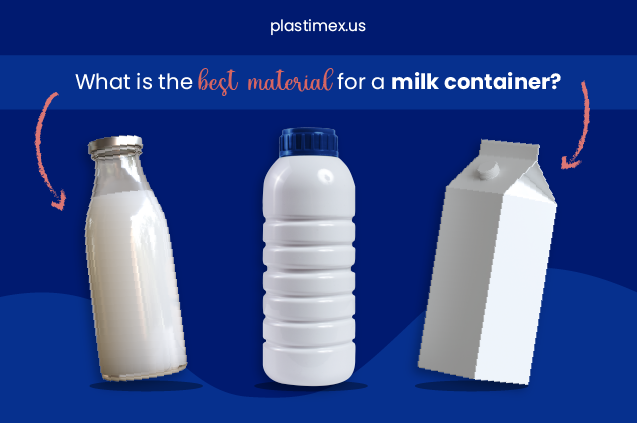Seleccionar el material óptimo para envasar leche es fundamental para garantizar la calidad y seguridad del producto, considerando tanto el nivel de protección necesario como las técnicas de conservación. La leche, al contener aceites esenciales y grasas, tiende a oxidarse rápidamente. Por ejemplo, la leche pasteurizada tiene una vida útil de siete días, por lo que es crucial encontrar un envase que la mantenga fresca a bajas temperaturas. En el caso de la leche ultrapasteurizada, cuya vida útil oscila entre 3 y 6 meses, puede mantenerse a temperatura ambiente si el envase proporciona una barrera eficaz contra la luz o los rayos UV. ¡Conoce todo lo necesario para elegir el material ideal para un envase de leche!
Características ideales de un envase para leche
El envase perfecto para la leche debe ser hermético para garantizar la frescura y la protección contra la contaminación. Además, es muy importante que garantice una barrera efectiva contra la luz para mantener los nutrientes de la leche intactos. La facilidad de vertido sin derrames ni goteos es esencial para la comodidad del consumidor, y preferiblemente, el envase se debe reciclar con facilidad para promover prácticas sostenibles y reducir su impacto ambiental.
¿Cuál es el mejor material?
Cartón
Principalmente empleados en la industria alimentaria, estos envases son muy ligeros y, gracias al avance tecnológico, permiten almacenar la leche por largos periodos sin problemas. No obstante, es crucial destacar que estos envases requieren una capa de plástico para evitar que los líquidos ablanden el cartón, ya que este material carece de la impermeabilidad característica del plástico
Vidrio
Para la fabricación del vidrio se necesita arena de sílice, carbonato de sodio y piedra caliza. Este material se elige a menudo como material de envasado por sus cualidades reciclables, reutilizables. En el caso de las botellas de vidrio, estas poseen una composición que no altera el sabor de la leche. Sin embargo, es difícil de transportar por su peso y, por lo tanto, es más caro costearlo por el gasto de combustible. En consecuencia, aunque existen muchas empresas que continúan escogiendo esta opción, la mayoría decidieron reemplazarlo por el plástico.
¿Por qué escoger PET para tu envase de leche? envase de leche?
Mejor conocido como PET por su nombre en inglés (polyethylene terephthalate), es uno de los materiales más utilizados para fabricar envases y botellas de plástico. Este tipo de material se caracteriza por ser cristalino, ligero, flexible y muy resistente.
El PET ofrece muchos beneficios para todo tipo de productos en la industria de alimentos y bebidas. En el caso de la leche, es un material resistente a los golpes, que conserva la conserva en la temperatura ideal y la protege del aire, luz y microorganismos. Además, una de sus principales ventajas es que facilita la personalización del producto. Si las empresas aprovechan esta oportunidad, pueden crear un diseño innovador para distinguirse de la competencia.
El envase ideal
Evaluar cuál es el envase de leche que más te conviene para envasar tu producto es todo un reto. Para lograrlo, es necesario que realices un estudio de mercado que te permita conocer las preferencias puntuales de tus consumidores. Si tienes alguna duda sobre este tema, te invitamos a contáctanos para brindarte asesoría respecto a las necesidades del envase que requieres para tu producto.

